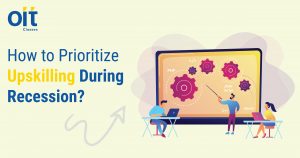
5 Education Technology Gains during the Pandemic

With the advent of educational technology, teachers and parents are starting to use a much more efficient way to transfer knowledge. Here’s how the learning technology industry has done its best to help students cope with the ongoing Covid-19 pandemic.
Multiple facets of the educational system have been severely damaged by the COVID-19 outbreak. Nevertheless, it also offered a rare chance to improve evaluation processes and make them more transparent. Real-time evaluations have been made easier by the quick development of eLearning and adaptable learning strategies, which may herald a move towards personalized education. Even if adjusting to new technology may still be a challenge, eLearning is laying the foundation for the future.
If you were to trust the fearful mainstream media, today’s youth would be destined for failure due to the “knowledge deficit” brought on by the emergency classes they had to take during the pandemic.
Innovative educators (and their students) recognize that this is not the case. There is no single point in time when any particular subject or topic must be learned. Many adults recognize that we remember and apply very little of what we learned in grades K-12. Talk to students before the pandemic, and they’ll tell you that school was often boring, irrelevant, and disconnected from the real world, where they could learn anything, anytime, anywhere using technology that was previously unavailable (or even prohibited) in many schools.
If educators embrace technology, they will be able to effectively overcome current assessment challenges. Here are some examples of how this might work:
- Device Accessibility:
Both students and adults comprehend that access to technology is critical to preparing students for real-world success. Before the pandemic, there was a huge digital divide. Schools wasted money on things like textbooks, paper, pencils, erasers, ink, and so on. All this while Chromebooks were available for around $ 200 (or $ 50- $ 75 per student per year). Changing to a more effective teaching tool is not only better for students, but is also less expensive. The pandemic has enabled us to provide more devices to students than ever before. This device access benefits all students, but it is especially important for the many students with disabilities or who speak other languages. This is because the devices can provide digital accessibility and translation.
- Internet Accessibility:
The pandemic has drawn attention to the resources students need to participate equitably in educational opportunities, especially during distance learning. While computers and the Internet were important in education before the pandemic – as tools for word processing, research and communication after school, or even as primary tools in school – they have now become essential tools for students to engage in the 2020 -21 academic year.
The pandemic has drawn attention to participate equitably in educational opportunities, especially during distance learning. While computers and the Internet were important in education before the pandemic – as tools for word processing, research and communication after school, or even as primary tools in school – they have now become essential tools for students to engage in the 2020 -21 academic year.
- Access to Educational Resources
As a result of the pandemic, school districts have implemented learning management systems and platforms such as Google Classroom. Finally, all students and families now have easy access to content. This means that if the student needs to see the content again, it will be available. If parents want to know what their child is working on, they are here. If a student changes schools in the middle of the year, he has easy access to study materials.
- Accessibility to trustworthy websites
The preparation phase is completed with a student presentation in front of the class and a teacher evaluation. A moment that has been lost and forgotten. Schools now have the ability to access a variety of platforms thanks to the pandemic, enabling staff members to carry out their duties in the most efficient manner possible. Students may post projects to Flipgrid, for instance, and then examine and comment on one other’s creations. Families may go through the grids to see what their kids have created. With the help of resources like Seesaw or Wix for Education, several students were able to build authentic digital profiles for the first time.
- Communication Made Easy
Before the pandemic, video conferencing was news, but now climbing has become a verb and everyone knows how to communicate via video. Video conferencing softens conversations and allows voices that were previously ignored to sit at the virtual table. For example, the ability to use chat helps retired or timid students share their ideas. The editing made it easier for people with disabilities or students who speak other languages to understand the speech. Many teachers discover how easy it is to bring teachers, guests and experts into their virtual classrooms.
Conclusion:
Finally, let us not be too quick to return to normalcy as society returns to school. The digital separation was normal. Old textbooks and exams were commonplace. Students with disabilities or those who speak other languages are not supported by Normal. Normal doesn’t know how technology has helped us serve underserved (or underserved) students. Innovative educators, leaders, and elected officials must recognize that the pandemic has revolutionized education. Now we need to decide how to use the lessons learned to build on these gains.





